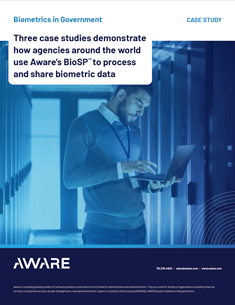When Your Face is the Only Document You Will Need to Travel
February 2, 2023 | 4 minute read
When Your Face is the Only Document You Will Need to Travel
February 2, 2023 | 4 minute read
Stand in line. Show your identification. Take off your shoes and belt. Airport security is notoriously slow and inconvenient for travelers. With security a premium, most passengers accept these steps as a necessary but frustrating process to travel domestically or internationally. But it doesn’t need to be this way. The technology already exists to make travel faster and more convenient while maintaining the highest levels of security.
The need for accurate identity verification
The frustrations people experience while traveling stem primarily from the need for airports to accurately verify the identities of every traveler. Airport and border control officials need to be confident that each traveler is the person they claim to be and is not a security threat. They perform this process manually, comparing a traveler’s identity documents with the person standing before them. And they repeat this process over and over again thousands of times each day.
Facial biometrics hold the key
Facial recognition offers airports an enticing alternative to today’s procedures; one that both increases security and traveler convenience. Simply put, facial recognition is a biometric process that can identify a person accurately using only their face. Since each person’s face is unique to them, the accuracy of facial recognition technology has the potential to greatly exceed that of today’s security measures.
How would this work? In one example, a traveler upon arriving at an airport could visit a kiosk for check-in. The kiosk would scan the person’s identity document—a passport, driver’s license, etc.—and upon verifying that document’s authenticity, would perform a facial recognition scan. This scan would quickly perform a facial capture of the traveler, compare it to the identity document, and validate the identity of the individual in moments.
The benefits of facial recognition explained
So why is facial recognition a beneficial alternative for both airports and passengers?
- It’s faster. Today, highly accurate facial recognition can be processed in a matter of seconds; a process that takes the same amount of time as taking a selfie. This increased speed moves travelers through the check-in and security process much more quickly, increasing the overall convenience and satisfaction of both passengers and airport officials.
- It’s more secure. Facial recognition removes the human error inherent in today’s security processes. Despite officials’ best efforts, manually comparing a document to a person standing before you is an imperfect process, increasing the possibility for security concerns. By implementing facial recognition, travelers can be confident that each of their fellow travelers is authorized to be there, airport officials can be confident in the same thing, and those same officials can spend their time on other critical matters.
- It’s consent-based. Facial recognition often gets associated with fears of surveillance and being monitored without knowledge or prior approval. Effective biometric security, however, is fully consent-based, allowing each traveler to either opt-in to the process, or opt-out and go through the longer, manual process instead. For facial recognition to be fully adopted, it must first be accepted by travelers by making sure that they are properly educated in the process, and then giving them a choice in the matter.
Facial recognition is not new to travel
While to many this technology might still seem to be on the horizon, the fact is that it’s already been in use for years. International travel took the lead in adopting this technology due to the increased need for border control agents to accurately identify every person leaving or entering their country. Additionally, in 2022 the Transportation Security Administration (TSA) began rolling out facial recognition pilot programs in 16 major U.S. airports, with the goal to expand to the remainder of the country in the coming years.
With approximately 70% of today’s travelers willing to accept facial recognition technology for a more seamless travel experience, the trend is clear: biometric technology is here to stay. Aware’s biometric services platform, BioSP, already provides airport and government officials with the biometric processing and management functionality necessary for adoption. Combined with the proven accuracy of Aware’s facial recognition algorithms—such as those found in the mobile biometric authentication framework, Knomi—the technology already exists to make the benefits of biometric travel a reality today.
